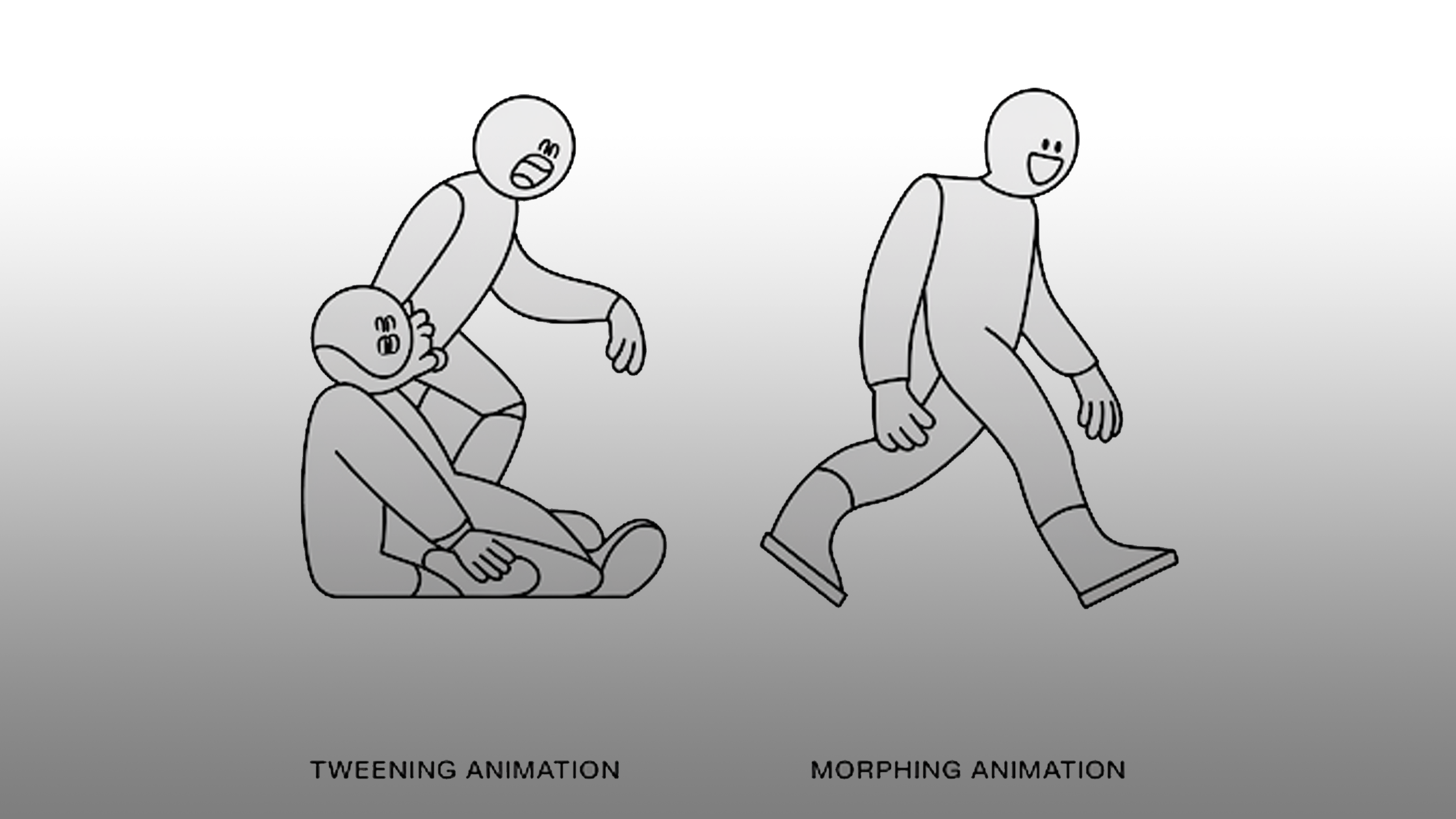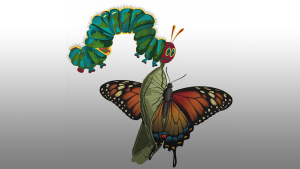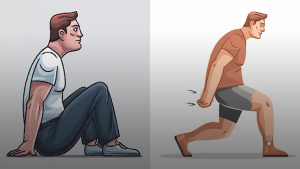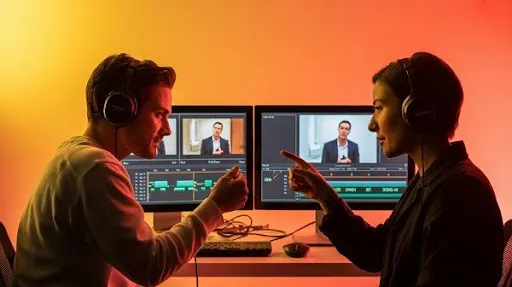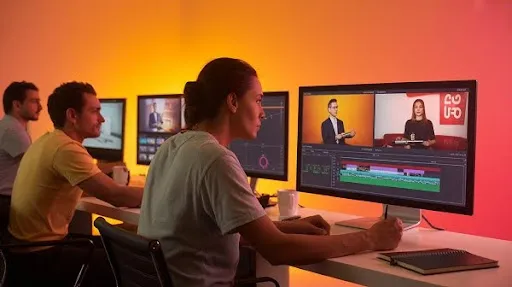When it comes to animation techniques, tweening and morphing are often confused due to their ability to create smooth transitions between frames. However, each serves a distinct purpose and is best suited for different animation styles. Understanding the fundamentals of tweening is key to achieving seamless motion in animations.
In this article, we’ll break down the key differences between tweening and morphing, their advantages, and when to use each.
What is Tweening?
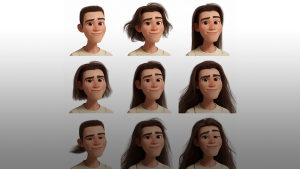
Definition of Tweening
Tweening (short for in-betweening) is an animation technique where the computer generates intermediate frames between two keyframes, creating smooth movement. Instead of animators drawing each frame manually, tweening allows software to automate the transition, saving time and effort—an evolution that has transformed animation from its hand-drawn roots to today’s digital precision.
How Tweening Works
An animator sets two keyframes (a starting and ending position).
The software automatically generates the frames between them, ensuring a seamless transition—offering a distinct approach compared to frame-by-frame animation, where each frame is drawn individually.
Tweening is commonly used for moving objects, scaling, and rotation effects.
🎬 Example: In a walk cycle animation, an animator places keyframes at two extreme leg positions, and tweening fills in the steps between them.
What is Morphing?
Definition of Morphing
Morphing is an animation technique where one shape or image is seamlessly transformed into another over time. Unlike tweening, which moves objects along a path, morphing changes the structure of an object.
How Morphing Works
Morphing tracks anchor points in the original image and maps them onto a new shape.
The software gradually blends one object into another across multiple frames.
It is often used for face transformations, logo animations, and cinematic special effects.
🎬 Example: In a movie, a character transforming into a werewolf would use morphing to gradually change facial structure and skin texture.
Key Differences Between Tweening and Morphing
| Feature | Tweening Animation | Morphing Animation |
| Definition | Moves an object from one position to another. | Transforms one shape or object into another. |
| How It Works | Generates in-between frames between keyframes. | Creates a seamless blend between two distinct images. |
| Best For | Motion graphics, UI animations, game design. | Face swaps, logo transformations, cinematic effects. |
| Example | A character walking from left to right. | A human face gradually morphing into an animal. |
4. Pros & Cons of Tweening
Advantages of Tweening
Time-efficient – Automates movement, reducing workload.
Smooth motion – Ensures seamless transitions between frames.
Great for UI/UX animations – Ideal for web design and mobile apps.
Lightweight animations – Works well for digital and web-based content.
Limitations of Tweening
- Lacks flexibility for organic transformations (e.g., changing a human into a wolf).
- Not suitable for complex shape transformations.
- Can sometimes look robotic if not adjusted manually.
Pros & Cons of Morphing
Advantages of Morphing
Great for visual transformations – Ideal for logos, characters, and cinematic effects.
Smooth blending between shapes – Unlike tweening, it can gradually reshape objects.
Highly engaging visuals – Creates stunning effects for film, advertising, and branding.
Limitations of Morphing
- Not suitable for motion-based animations (like running or flying).
- Computationally heavier – Requires more processing power.
- Limited to specific use cases (mostly special effects and logo transitions).
When Should You Use Tweening vs Morphing?
Use Tweening When:
You need simple motion animations (e.g., moving objects, zoom effects).
Your project involves character movement, game animations, or UI transitions.
You require fast, lightweight animations for digital content.
Example: Tweening is used in video game animations, moving backgrounds, and interactive web elements.
Use Morphing When:
You need seamless shape transformations (e.g., face swaps, artistic logo animations).
Your project involves cinematic special effects or abstract visuals.
You want a smooth blend between two distinct images or shapes.
Example: Morphing is used in film CGI transformations, music videos, and futuristic branding animations.
Combining Tweening and Morphing in Animation
Many professional animations blend tweening and morphing for dynamic visual effects, making it essential to master smooth transitions for fluid motion.
🎬 Example 1: Animated Movies
- Pixar & Disney use tweening for character movement and morphing for magical transformations (e.g., Beauty and the Beast).
🎮 Example 2: Video Games
- Tweening is used for movement, while morphing is applied to power-ups and character shape changes.
FAQS
What is the main difference between tweening and morphing?
✔ Tweening is used to move objects smoothly between two keyframes.
✔ Morphing is used to change the shape or structure of one object into another.
📌 Example: Tweening moves a car from left to right while morphing transforms a circle into a star.
🚀 Want to learn more? Read our complete guide to tweening to understand its full potential.
When should I use tweening instead of morphing?
Use tweening if:
✅ You need smooth object movements (e.g., characters walking, buttons animating).
✅ You are working on motion graphics, game animations, or UI design.
✅ You need efficient animation with minimal effort.
📌 Example: Tweening is perfect for creating motion in explainer videos and user interfaces.
When is morphing the better choice?
Use morphing if:
✅ You need one shape to transform into another.
✅ You are creating face swaps, logo transformations, or cinematic effects.
✅ You want highly artistic animations that gradually blend elements.
📌 Example: Morphing is ideal for changing a human face into an animal in movies.
📌 For a broader understanding, check out our tweening definition and examples.
What software supports tweening and morphing?
🔹 Best software for tweening:
✅ Adobe Animate (2D motion & shape tweening)
✅ Toon Boom Harmony (2D animation & rigging)
✅ Blender & Maya (3D skeletal tweening)
✅ Unity & Unreal Engine (Game animation & UI effects)
🔹 Best software for morphing:
✅ After Effects (Shape morphing & special effects)
✅ Morph Age (Face transformation & CGI morphing)
✅ FantaMorph (Photo morphing & animation)
Can tweening and morphing be used together?
Yes! Many professional animations combine both techniques for dynamic results.
🎬 Example:
- Tweening moves a character while morphing changes their costume.
- Tweening animates a door opening, but morphing makes it dissolve into mist.
🚀 Want to master both techniques? Read our complete guide to tweening to understand its full potential.
Is tweening faster than morphing?
Yes, tweening is generally faster because it relies on predefined keyframes, while morphing requires complex shape interpolation.
✔ Tweening is great for fast, efficient animations.
✔ Morphing takes more time but creates dramatic effects.
📌 Example: Tweening a bouncing ball is much faster than morphing it into a cloud.
Which industries use tweening and morphing?
🔹 Tweening is widely used in:
- UI/UX design
- Web animations
- Video game motion graphics
- Corporate explainer videos
🔹 Morphing is common in:
- Film & special effects
- Music videos
- Logo animations & branding
- AI-generated facial transformation
📌 Example: Hollywood uses morphing for supernatural transformations, while UI designers use tweening for mobile interactions.
Is morphing more complex than tweening?
✔ Yes, morphing is more complex because it involves:
- Tracking multiple anchor points across frames.
- Computing gradual transformations in shapes.
- Blending colors and textures for realism.
🎬 Example: Morphing a human face into a skull requires detailed texture mapping, while tweening only moves the object’s position.
📌 For a deeper dive, check out our tweening definition and examples.
What are common mistakes when using tweening and morphing?
🔹 Mistakes in Tweening:
❌ Overusing linear interpolation, making motion feel robotic.
❌ Ignoring easing functions, leading to unnatural speed changes.
❌ Using tweening for shape transformations, which can cause distortions.
🔹 Mistakes in Morphing:
❌ Not properly aligning anchor points, causing shape warping.
❌ Using morphing for simple motion, where tweening would be more efficient.
❌ Overusing morphing, making animations look unrealistic or gimmicky.
How can Prolific Studio help with professional animation?
At Prolific Studio, we specialize in:
🚀 2D & 3D Animation Services – Corporate, branding, and storytelling animations.
🎮 Gaming Animation & Motion Graphics – Custom tweening & morphing effects.
📱 UI/UX Animation – High-quality, smooth web & mobile animations.
📌 Need professional animation services? Contact Prolific Studio today for a free consultation!

